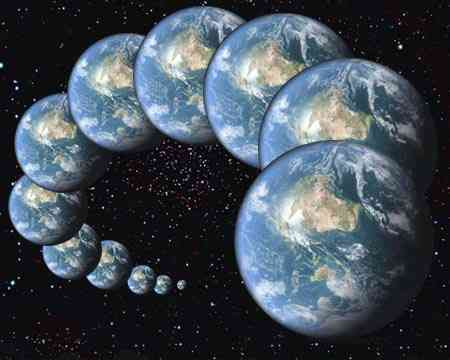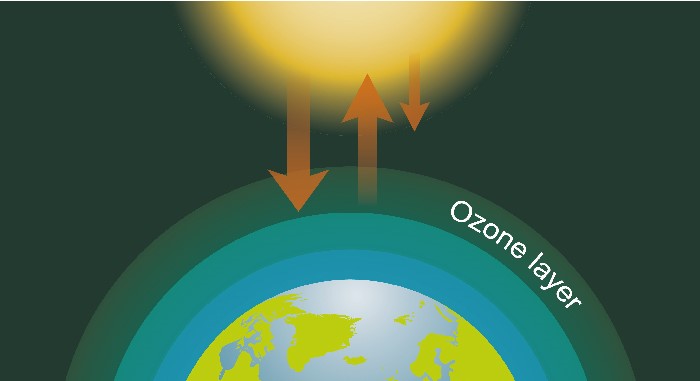Our universe is unimaginably big. Hundreds of billions, if not trillions, of galaxies spin through space, each containing billions or trillions of stars. Some researchers studying models of the universe speculate that the universe's diameter could be 7 billion light-years across. Others think it could be infinite.
But is it all that's out there? Science fiction loves the idea of a parallel universe, and the thought that we might be living just one of an infinite number of possible lives. Multiverses aren't reserved for "Star Trek," "Spiderman" and "Doctor Who," though. Real scientific theory explores, and in some cases supports, the case for universes outside, parallel to, or distant from but mirroring our own.
Multiverses and parallel worlds are often argued in the context of other major scientific concepts like the Big Bang, string theory and quantum mechanics.
That mysterious process of inflation and the Big Bang have convinced some researchers that multiple universes are possible, or even very likely. According to theoretical physicist Alexander Vilenkin of Tufts University in Massachusetts, inflation didn't end everywhere at the same time. While it ended for everything that we can detect from Earth 13.8 billion years ago, cosmic inflation in fact continues in other places. This is called the theory of eternal inflation. And as inflation ends in a particular place, a new bubble universe forms, Vilenkin wrote for Scientific American in 2011.
Those bubble universes can't contact each other because they continue to expand indefinitely. If we were to set off for the edge of our bubble, where it might butt up against the next bubble universe over, we'd never reach it because the edge is zipping away from us faster than the speed of light, and faster than we could ever travel.
But even if we could reach the next bubble, according to eternal inflation (combined with string theory), our familiar universe with its physical constants and habitable conditions could be totally different from the hypothetical bubble universe next to our own.
"This picture of the universe, or multiverse, as it is called, explains the long-standing mystery of why the constants of nature appear to be fine-tuned for the emergence of life," Vilenkin wrote. "The reason is that intelligent observers exist only in those rare bubbles in which, by pure chance, the constants happen to be just right for life to evolve. The rest of the multiverse remains barren, but no one is there to complain about that."
Vilenkin's explanation implies that in some of the infinite bubble universes outside our own, there could be other intelligent observers. But in every instant that passes, we get farther away from them, and we will never intersect.
Some researchers base their ideas of parallel universes on quantum mechanics, the mathematical description of subatomic particles. In quantum mechanics, multiple states of existence for tiny particles are all possible at the same time — a "wave function" encapsulates all of those possibilities. However, when we actually look, we only ever observe one of the possibilities. According to the Copenhagen interpretation of quantum mechanics as described by the Stanford Encyclopedia of Philosophy, we observe an outcome when the wave function "collapses" into a single reality.
But the many-worlds theory proposes instead that every time one state, or outcome, is observed, there is another "world" in which a different quantum outcome becomes reality. This is a branching arrangement, in which instant by instant, our perceived universe branches into near-infinite alternatives. Those alternate universes are completely separate and unable to intersect, so while there may be uncountable versions of you living a life that's slightly — or wildly — different from your life in this world, you'd never know it.
The many-worlds theory is the most "courageous" take on the quandary of quantum mechanics, physicist Sean Carroll wrote in his book, "Something Deeply Hidden: Quantum Worlds and the Emergence of Spacetime" (Dutton, 2019). He also argued that it is the most straightforward theory, although not without wrinkles.
One of those wrinkles is that the many-worlds idea is not really falsifiable. This is an important component of scientific thought and is the way the scientific community develops ideas that can be explored with observation and experimentation. If there's no opportunity to find evidence against a theory,
Some physicists believe in a flatter version of multiple universes. That is, if the universe that we live in goes on forever, there are only so many ways that the building blocks of matter can arrange themselves as they assemble across infinite space. Eventually, any finite number of particle types must repeat a particular arrangement. Hypothetically, in a big enough space, those particles must repeat arrangements as large as entire solar systems and galaxies.
So, your entire life might be repeated elsewhere in the universe, down to what you ate for breakfast yesterday. At least, that's the theory.
But if the universe began at a finite point, as nearly every physicist agrees that it did, an alternate version of you likely doesn't exist, according to astrophysicist Ethan Siegel's 2015 Medium article.
According to Siegel, "the number of possible outcomes from particles in any Universe interacting with one another tends towards infinity faster than the number of possible Universes increases due to inflation."
"So what does this mean for you?" Siegel wrote. "It means it's up to you to make this Universe count."
In a relatively recent addition to the pantheon of multiverse theories, researchers from the Perimeter Institute for Theoretical Physics in Waterloo, Ontario, have proposed that the universe began at the Big Bang — and on the opposite side of the Big Bang timeline, stretching backwards in time, a universe once existed that was the exact mirror image of our own.
"Instead of saying there was a different universe before the bang, we're saying that the universe before the bang is actually, in some sense, an image of the universe after the bang," Neil Turok, a Perimeter Institute researcher, told Space.com sister site Live Science.
That means everything — protons, electrons, even actions like cracking an egg — would be reversed. Antiprotons and positively charged electrons would make up atoms, while eggs would un-crack and make their way back inside chickens. Eventually, that universe would shrink down, presumably to a singularity, before expanding out into our own universe.
Seen another way, both universes were created at the Big Bang and exploded simultaneously backward and forward in time.

Parallel universes are no longer just a feature of a good sci-fi story. There are now some scientific theories that support the idea of parallel universes beyond our own. However, the multiverse theory remains one of the most controversial theories in science.




